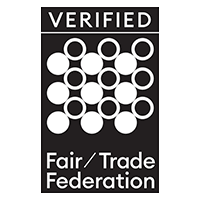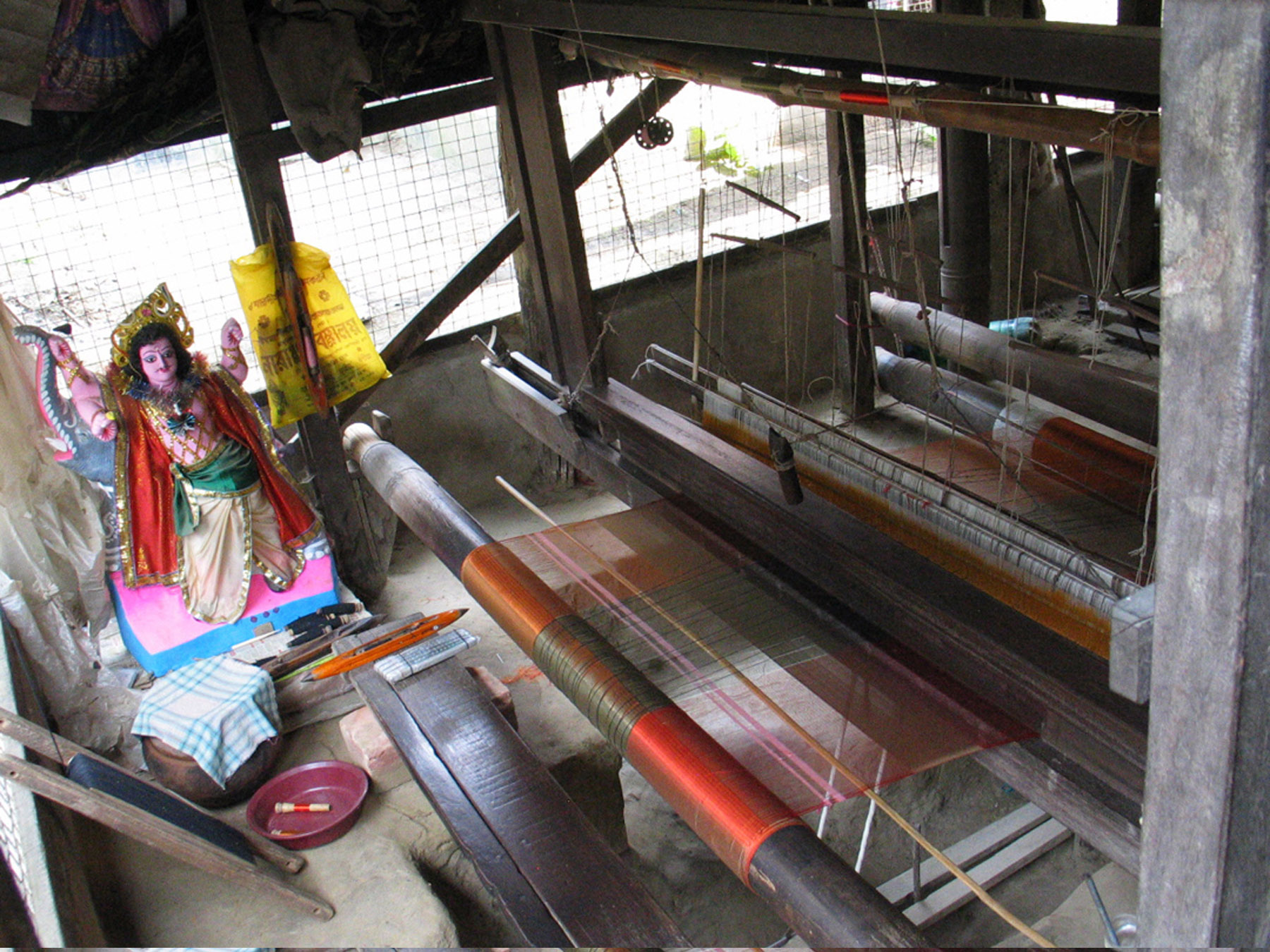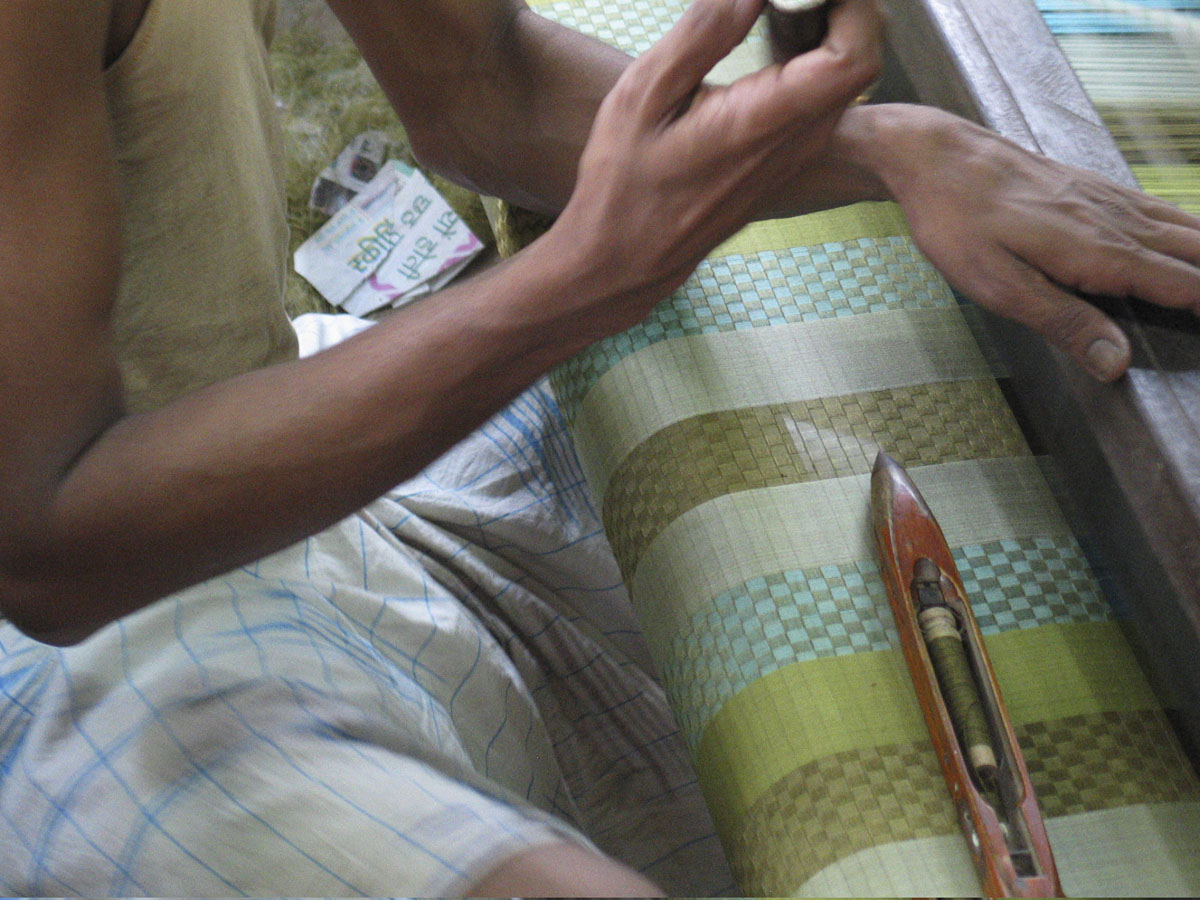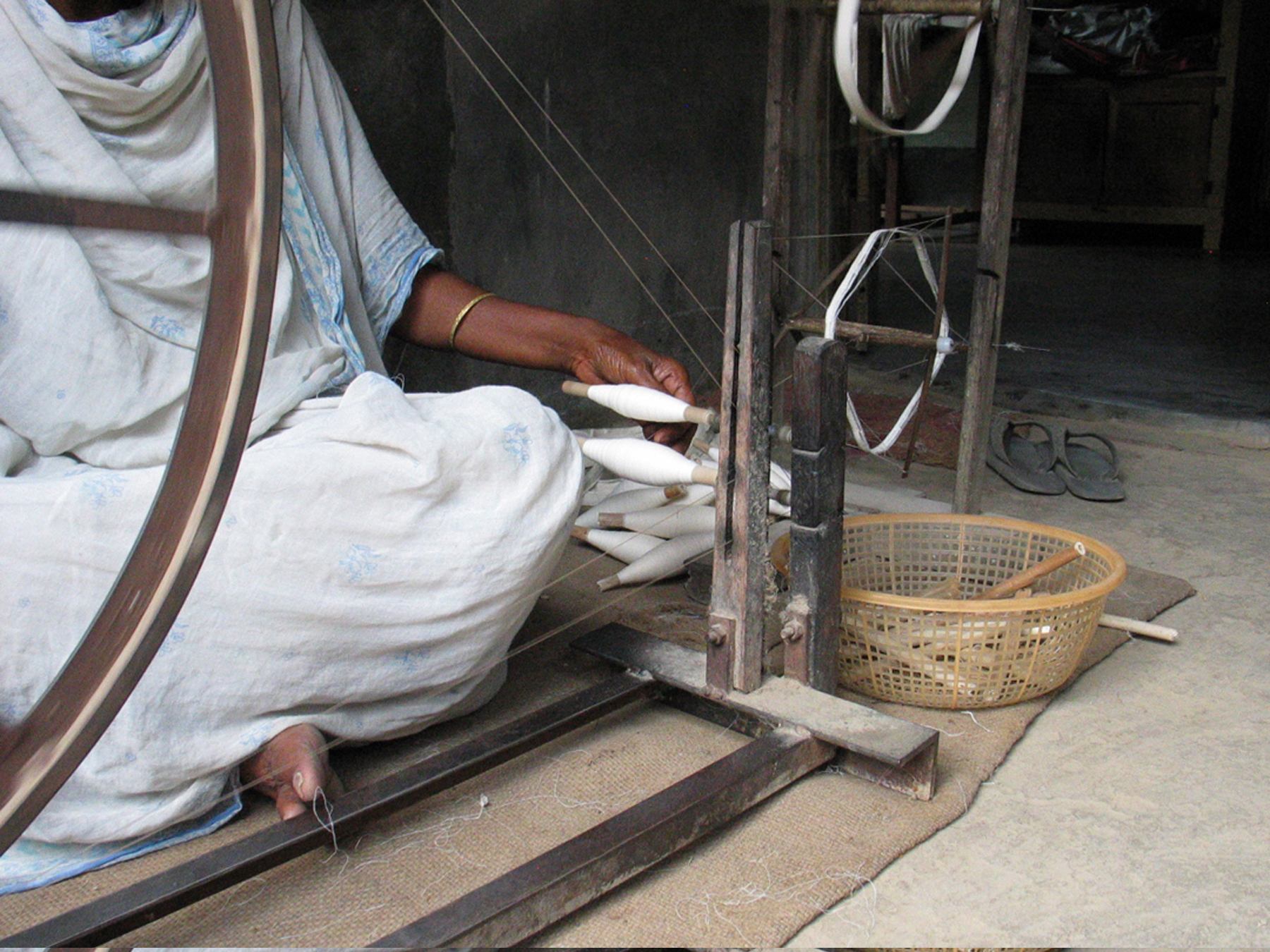Fair Trade Handloom Textiles of India
Hand loom weaving is an ancient handcraft dating back thousands of years. India has one of the richest traditions in this ancient creative endeavor. From Kashmir in the Himalayas to Kanyakumari at the most southern tip of India, each region has its own unique way of creating hand woven cloth. For example, Eastern India is well known for its Ikat weaves, Varanasi for its brocade jacquard weaves, and South India for its fine cotton and silk weaves.
Over the centuries, India’s weavers have developed many different kinds of weaves and fabrics, out of various types of fibers. Locally cultivated cotton, silk, and wool are the main types of fibers they work with. In the past, it was the rich influences of the wealthy, royal families of medieval India that developed a repertoire of fine clothing that was as beautiful as it was comfortable. They wore nothing but the finest of fabrics. The queens and princesses commissioned the master weavers of the court to create fine muslins, cotton and silk cloth. Often these fabrics were embellished with gold and silver threads that added to their elegance. One can still see the influence of these ancient artisans in the fabric that is woven today. Working together, the royal women and their master weavers became the progenitors of the world famous textile arts of India and that is the wealth of knowledge, skill and craftsmanship Sevya is committed to preserving through our wholesale fair trade business.
Sevya works with a number of weaving cooperatives throughout India and these master weavers create the unique hand-woven fair trade scarves and other textiles used in our fair trade clothing and home décor collections. The wooden looms used by the weavers are pit looms, with 2-8 foot pedals that are located below the ground, in a shallow pit. The weavers simultaneously coordinate the intricate shuttle throwing with their hands while operating the foot pedals, thus creating the beautiful and intricate patterns in the weave.
There are many stages involved in the handloom process, starting with spinning the yarn onto spindles, dyeing the yarn, harnessing and setting the barrels connected to the loom, weaving the fabric, and hand-finishing the tassels at the end of the textile. No electricity is used at any stage of production, which makes hand woven textiles a very eco-friendly process which provides employment to entire villages.
Textiles from India, in the form of clothing, scarves and other fabric goods, are as diverse as its culture. Providing vital employment opportunities to many villages throughout India, the handloom weaving industry is the one of the largest economic activities in India, second only to agriculture. Weaving is as much a part of their identity as it is their livelihood.
However, with globalization and mass production, many of these artisan families and villages are threatened with financial ruin. The continued economic push to produce items more cheaply and quickly is making it very difficult for the weavers to compete. By bringing these handmade items to market through the Fair Trade process, Sevya is investing in the continued legacy of this rich Indian heritage.
Sevya specializes in wholesale scarves and clothing that are a unique fusion of fair trade and fashion. Our fair trade scarves and shawls are hand woven using natural fibers including wool, silk, and cotton. We also carry handmade metal craft jewelry, gifts and items for the home. Our designer scarves and shawls combine the best of artisan traditions with contemporary styles for both women and men.
For a brief view of weavers in India at work, please take a moment to watch our small video at this link:




